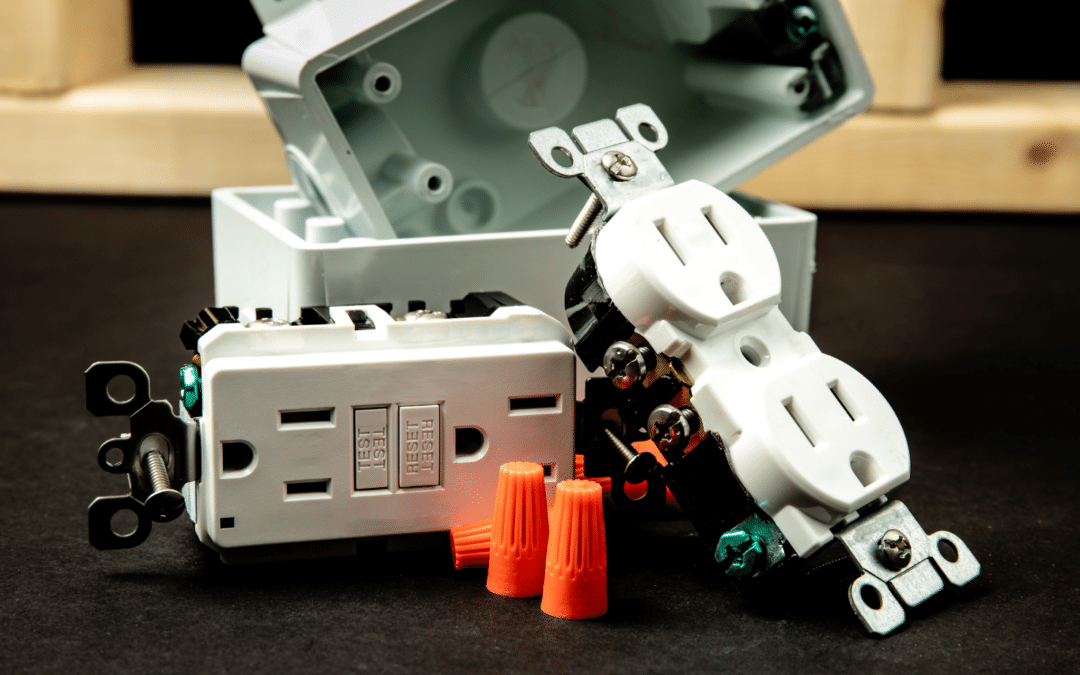As we move into the slower days of summer (and summer storms!), it can be a perfect time to perform an annual electrical safety check of your home. There are a few simple steps any homeowner can take to ensure the home’s electrical system is safe and functional.
For maximum peace of mind, call an electrician to perform a thorough electrical inspection, which is recommended every three to five years. An electrician can not only identify electrical hazards in your home but can also outline ways to be more efficient and save money on your power bills.
1. Inspect the Breaker Panel
Begin your home electrical inspection by locating the main breaker panel. Check that there is three feet of clear space around the panel and store a battery-operated flashlight nearby in case of power outages.
Examine the breakers to rule out any signs of rust or rodent activity. Flip each one on and off to ensure they are not stuck or corroded. It’s also helpful to have the breakers clearly labeled. If your home is older, those labels may be faded or illegible and need an update.
2. Check Out Exposed Wiring
If wires are exposed and visible in a basement or attic, visually inspect them to ensure they’re free of cracks, splits and rodent activity. If there are signs of chewing or nests, take immediate steps to repair the damaged wiring and get rid of the rodents.
3. Examine Extension Cords
Examine extension cords for cuts, nicks and other damage before using them for DIY projects or yard work. Be sure that any cords used with power tools are within their recommended amperage rating.
4. Examine Exterior Outlets
Be sure your home’s exterior outlets are sealed against the elements and animal intrusion and are GFCI-protected. If an outdoor outlet is going to be in use for an extended period, it’s recommended that you equip it with a cover that has access holes, allowing the cover to be securely closed while the receptacle is in use.
5. Use Your Senses to Sniff Out Trouble
As you move your inspection inside the house, use your senses of touch, smell and hearing to get an idea of your electrical system’s overall health. Feel for excessive heat on outlets and light switches.
While it’s normal that dimmer switches produce some heat while the lights are on, it should never be hot enough to be uncomfortable to the touch. A “hot wire” smell around switches and outlets may indicate that you need to replace the device.
Finally, if you hear popping or crackling in an outlet or switch, flip the breaker to power it off and have it inspected by an electrician as soon as possible.
6. Examine Interior Outlets
Test Outlets
The use of an electrical test kit with receptacle and voltage testers allows you to detect the most common wiring problems in standard and GFCI receptacles. A receptacle tester helps determine the wiring condition in the outlet, indicating open ground, reverse polarity, open hot, open neutral and hot/ground reversed.
If you observe that your home’s electronic devices are behaving irregularly – such as lights dimming or flickering – you should test the voltage on that outlet with a voltage tester. For standard 120-volt residential outlets, readings between 110 and 130 volts are expected. Readings outside of that range indicate there is a problem, such as a loose wire.
Fix Loose Outlets
Outlets wear out over time. If plugs sit loosely in an outlet, you must replace the receptacle. If the outlet itself is loose in the electrical box, you may be able to fix it by using plastic shims to secure and tighten the outlet.
Secure Outlets Accessible to Kids
Check out our blog Steps to Baby Proofing Your House from an Electrical Perspective | Shockley Electric to learn how to secure outlets reachable by children.
The National Electrical Code (NEC) now requires outlets reachable by children to have an interior shield that prevents the insertion of foreign objects like paper clips or coins, preventing shocks. It’s relatively simple to replace old outlets with tamper-resistant ones.
Test for GFCI Protection
Outlets that are exposed to a water source should be GFCI-protected. Protection may be in the form of an individual outlet, an outlet farther up on the same circuit or by a GFCI breaker in the panel.
You should be able to press the test button to ensure that every outlet affected is turned off and safe. See our blog GFCI or AFCI: What Are They and Which One Is Right for You? | Shockley Electric to learn more about GFCI protection.
7. Review Your Home’s Surge Protection
Finally, consider how much damage could occur if there was a spike in your home’s electrical current. Surges can happen and have the potential to extensively damage everything from air conditioners to laptops and phones.
If you don’t have it already, consider installing a whole-home surge protection device to protect your electrical system and everything plugged into it.
How Can We Help with Your Electrical Home REview
At Shockley Electric, we address important home safety issues such as power surges, faulty electrical wiring and potential fire hazards when we do electrical preventive maintenance in homes or commercial buildings. We are licensed, trained, and skilled in safety-proofing your home, and we are committed to the safety and well-being of our customers.
If you are experiencing electrical problems in your home or aren’t sure if your home is protected from electrical hazards, schedule an in-home estimate or appointment with us today. Fill out our form or call us now for a free estimate!

